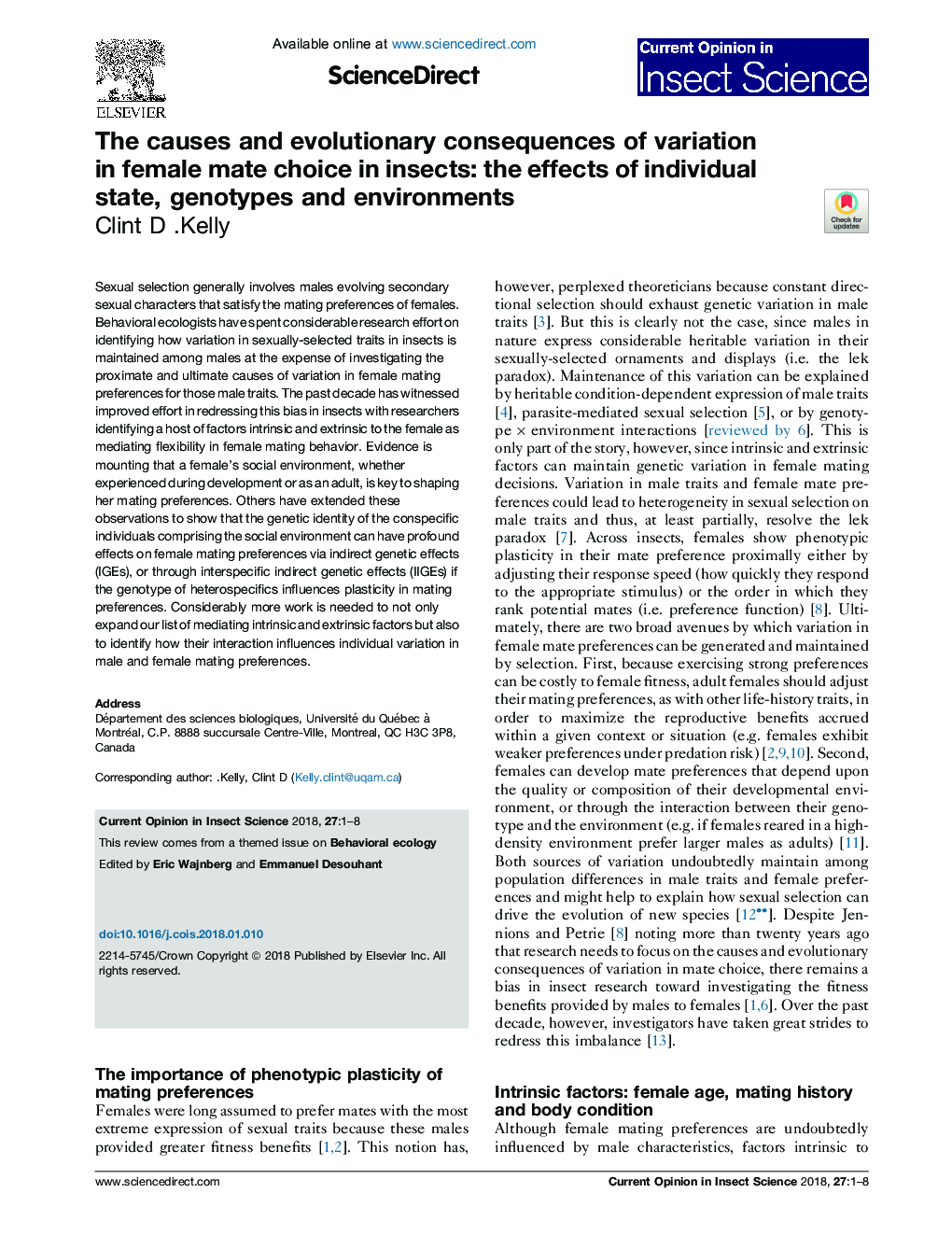| Article ID | Journal | Published Year | Pages | File Type |
|---|---|---|---|---|
| 8878459 | Current Opinion in Insect Science | 2018 | 8 Pages |
Abstract
Sexual selection generally involves males evolving secondary sexual characters that satisfy the mating preferences of females. Behavioral ecologists have spent considerable research effort on identifying how variation in sexually-selected traits in insects is maintained among males at the expense of investigating the proximate and ultimate causes of variation in female mating preferences for those male traits. The past decade has witnessed improved effort in redressing this bias in insects with researchers identifying a host of factors intrinsic and extrinsic to the female as mediating flexibility in female mating behavior. Evidence is mounting that a female's social environment, whether experienced during development or as an adult, is key to shaping her mating preferences. Others have extended these observations to show that the genetic identity of the conspecific individuals comprising the social environment can have profound effects on female mating preferences via indirect genetic effects (IGEs), or through interspecific indirect genetic effects (IIGEs) if the genotype of heterospecifics influences plasticity in mating preferences. Considerably more work is needed to not only expand our list of mediating intrinsic and extrinsic factors but also to identify how their interaction influences individual variation in male and female mating preferences.
Related Topics
Life Sciences
Agricultural and Biological Sciences
Agronomy and Crop Science
Authors
Clint D .Kelly,
